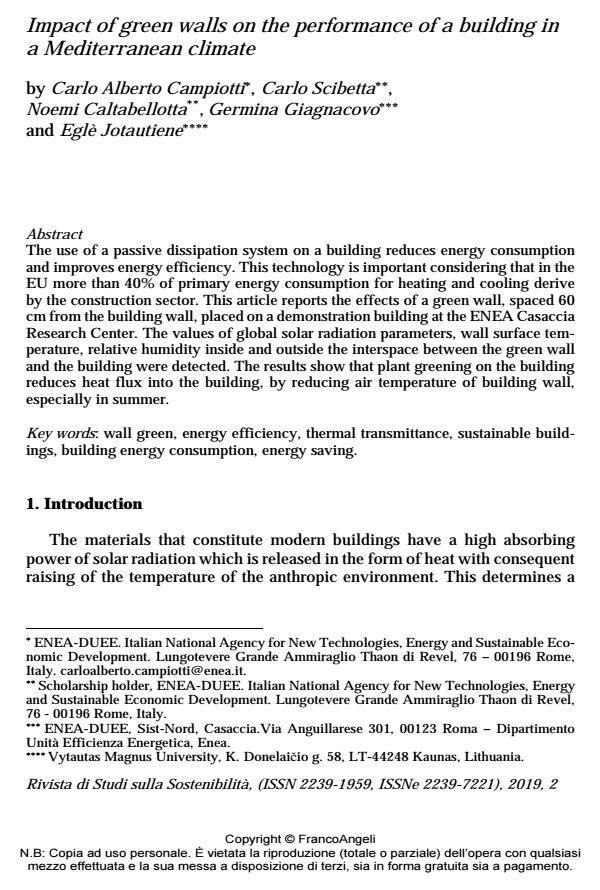Impact of green walls on the performance of a building in a Mediterranean climate
Journal title RIVISTA DI STUDI SULLA SOSTENIBILITA'
Author/s Carlo Alberto Campiotti, Carlo Scibetta, Noemi Caltabellotta, Germina Giagnacovo, Eglè Jotautiene
Publishing Year 2020 Issue 2019/2 Suppl.
Language English Pages 18 P. 9-26 File size 519 KB
DOI 10.3280/RISS2019-002-S1002
DOI is like a bar code for intellectual property: to have more infomation
click here
Below, you can see the article first page
If you want to buy this article in PDF format, you can do it, following the instructions to buy download credits

FrancoAngeli is member of Publishers International Linking Association, Inc (PILA), a not-for-profit association which run the CrossRef service enabling links to and from online scholarly content.
The use of a passive dissipation system on a building reduces energy consumption and improves energy efficiency. This technology is important considering that in the EU more than 40% of primary energy consumption for heating and cooling derive by the construction sector. This article reports the effects of a green wall, spaced 60 cm from the building wall, placed on a demonstration building at the ENEA Casaccia Research Center. The values of global solar radiation parameters, wall surface temperature, relative humidity inside and outside the interspace between the green wall and the building were detected. The results show that plant greening on the building reduces heat flux into the building, by reducing air temperature of building wall, especially in summer.
Keywords: Wall green, energy efficiency, thermal transmittance, sustainable buildings, building energy consumption, energy saving.
- Study on the dynamic heat transfer role of vertical greening in building microclimate based on multi-objective coupling Liang Qiao, in Journal of Renewable and Sustainable Energy 025101/2025
DOI: 10.1063/5.0240874
Carlo Alberto Campiotti, Carlo Scibetta, Noemi Caltabellotta, Germina Giagnacovo, Eglè Jotautiene, Impact of green walls on the performance of a building in a Mediterranean climate in "RIVISTA DI STUDI SULLA SOSTENIBILITA'" 2 Suppl./2019, pp 9-26, DOI: 10.3280/RISS2019-002-S1002